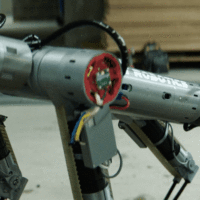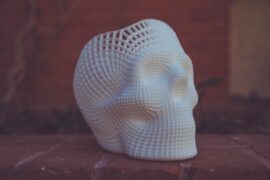As we inch closer to the future promised by the late 20th century (still waiting on you, flying cars), technology we thought to be impossible is now starting to become reality.
Just take a look at Everett Lawson, a research assistant at MIT’s Media Lab. Born with congenital clubbed-foot, his left leg was weaker and prone to breaking easily. After undergoing reconstructive surgery, which resulted in the complete deterioration of his leg, the decision was made to amputate the leg.
As an RA at MIT, Lawson did the only logical thing: make a leg of his own.
Unlike a normal amputation, he underwent an “Ewing amputation” – a procedure where most of the musculature and tendons are preserved near the cut off portion. This allowed Everett to create a link between his brain and the bionic limb attached to his leg.



By attaching sensors to the muscles near his amputated appendage, he can control the mechanical leg just by thinking about it.

But Everett wasn’t content with just moving a bionic leg; he wanted to feel with it as well. After working with the biomechatronics group at MIT to get his leg up and running, he took things into his own hands and added a whole heap of sensors to the bionic leg.

These sensors work completely opposite to the sensors in his flesh-and-blood upper appendage. Instead of acting on what the upper leg tells it to do, the sensors in the bionic leg send signals up to Everett’s brain, giving sensations of touch that he would feel in his original leg.

He can feel individual stimuli on his ‘toes’ and the bottom of his foot, allowing him to know there is something acting on the leg. Thanks to his son, he even discovered he could be tickled through the sensors.
Everett hopes the technology could help his son one day should he ever need it. As it turns out, he has bilateral clubbed feet, which means he has his father’s same condition only on both of his legs. With the advances in technology, both Everett and the biomechatronics group at MIT hope to remove the notion that the loss of a limb isn’t a handicap but rather an opportunity to make your body even better.







